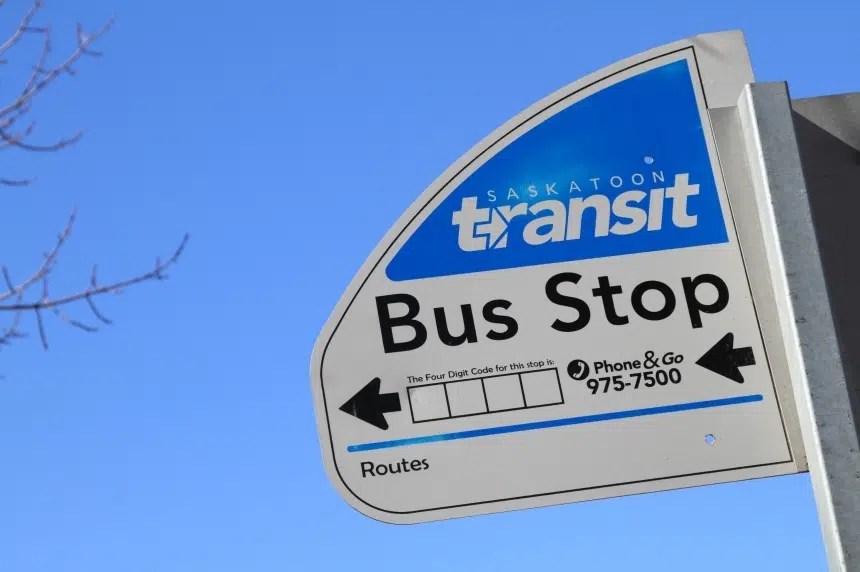A phase-in project that will see 24 buses outfitted with permanent operator safety barriers has been unanimously approved by Saskatoon city council.
Right now, transit operators have a type of vinyl curtain, or non-permanent barrier, designed to protect them from COVID-19 transmission. However, those curtains can easily be bypassed.
Over the past three years, there have been 28 assaults on drivers.
At the Monday meeting, Coun. Bev Dubois and Coun. Randy Donauer put forward the motion that would see administration spend $500,000 reallocated from the federal gas tax fund for the project.
In a slightly more controversial portion of that motion, administration would also report back before 2022 budget deliberations on the cost and strategy for retrofitting the rest of the 140-bus fleet.
Total cost of the project would be between $980,000 and $2.96 million, or about $7,000 to $21,000 per bus.
Amalgamated Transit Union (ATU) Local 615 president Darcy Pederson urged council not to wait to retrofit all of the buses, explaining the 28 assaults don’t include verbal abuse or situations of intimidation.
He added there have been more than 1,100 occupational health and safety workplace concerns over the vinyl barriers.
“And all 1,100 are outstanding and haven’t been addressed,” he continued.
“The complaints around glare issues, not being able to see clearly the right-side mirror and the door, as well as passengers physically pushing the vinyl barrier aside to talk with the operator, potentially exposing them face to face with COVID-19.”
Pederson said barriers are nothing new for many transit services in other cities like Edmonton. They have been tested and have been proven to provide protection against assault, and additional protection against the COVID virus.
“Here in Saskatoon, we are seeing things we usually don’t see; threats, intimidation, fights on the buses, people attacking buses trying to smash windows, mirrors, and some going to the extent of climbing on the bus to try and gain entry.” he added.
“Twenty-eight reported assaults shouldn’t be the benchmark to determine whether or not we need proper safety equipment. In my opinion, one assault is too many.”
According to the city’s GM of transportation and construction, Terry Schmidt, the cost of permanent barriers still needs to be explored, along with design and construction.
They would not be made of Plexiglas, but rather laminated safety glass. According to an administrative report, Plexiglas is not Canadian Motor Vehicle Safety Standard compliant, so SGI won’t allow its use in transit buses. Within the barriers would also be heating and cooling units for drivers.
A separate motion by Coun. Darren Hill to collect more detail on the general locations of the 28 assaults narrowly passed by a 6-5 vote, while the second part of the motion to gather data on any other assaults or negative interactions between operators and riders passed unanimously.
The phase-in project is to begin in early 2021.











